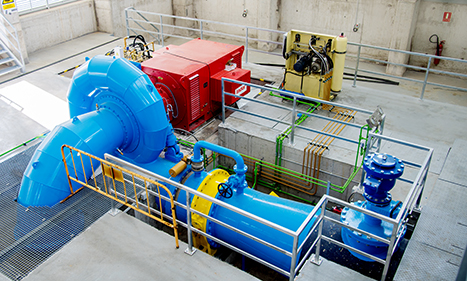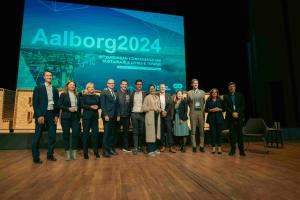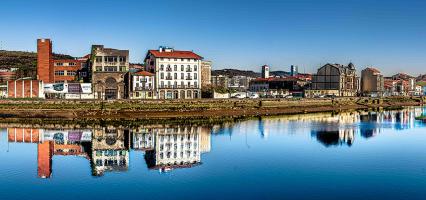Thessaloniki gets ready for its metro launch in November
The underground rapid transit lines have been under construction for almost two decades due to various project delays
 TheMayor.EU logo
TheMayor.EU logo Production of green energy through hydroelectric power stations will begin soon in Madrid
The climate change fight becomes more and more fierce on all fronts. One of the most important industries that is responsible for a big percentage of CO2 emissions is the energy sector. On EU level, more and more talks take place regarding the phase-out of coal power plants and new alternative ways of production of energy supply.
Spain is one of the countries that can very well be affected by all the consequences of climate change due to its location in the Southern part of Europe and its exposure to the Mediterranean and the Atlantic Ocean and the threat of higher sea levels in the future.
Legislation in Spain is quite well established when it comes to the regulation of renewable energy supply through a specific law and a few royal decrees that supplemented the already existing EU legislation on the matter. The government provides incentive schemes through which the renewable power generators receive regular payments in addition to the market price on which they sell their production, for example.
As most EU countries, Spain is also developing a renewable energy industry and a market that makes use of the natural resources available to the country which include mainly wind, hydroelectric and thermal power. According to Smart Energy International, in July 2019 30% of the energy used in Spain came from renewables. Wind power tops the chart of renewable resources, used with a constant increase of 29.3% of the total renewables per year. Most of the financing for the new wind farms to be built in the next years comes from the European Investment Bank totalling to EUR 385 million.
Madrid, as the capital of Spain, comes forward as a leader in the fight against climate change, having implemented a project for a mini hydroelectric power station that will help with the reduction of fossil fuel use. The project foresees electricity generation from a cycle of water discharges from the reservoir`s dam. It is co-financed by the European Regional Development Fund with an amount of over EUR 3 million compared to the total amount allocated to the project – above EUR 6.5 million.

Part of the mini-hydroelectric power station at the Valmayor reservoir © Canal de Isabel II, 2018
The innovation proposed under this project consists of a series of elements that will allow for the production of 2.54 GWh per year from only 672 kW output, i.e. a very small water flow is needed to generate a big amount of power supply.
This project is part of the country`s strategy to move towards a low-carbon economy, one of the main priorities of the EU Cohesion policy and helps Madrid move one step closer to carbon neutrality while at the same time contributing to the efforts of meeting its ambitious climate targets.

The underground rapid transit lines have been under construction for almost two decades due to various project delays

Now you can get your wine in Talence by paying directly in Bitcoin

That’s because the state has to spend money on updating the railway infrastructure rather than subsidizing the cost of the popular pass

Rethinking renewable energy sources for the urban landscape

The examples, compiled by Beyond Fossil Fuels, can inform and inspire communities and entrepreneurs that still feel trepidation at the prospect of energy transition

Now you can get your wine in Talence by paying directly in Bitcoin

The 10th European Conference on Sustainable Cities and Towns (ESCT) sets the stage for stronger cooperation between the EU, national and local level to fast track Europe's transition to climate neutrality.

At least, that’s the promise made by the mayor of Paris, Anne Hidalgo

The underground rapid transit lines have been under construction for almost two decades due to various project delays

At least, that’s the promise made by the mayor of Paris, Anne Hidalgo

Hostal de Pinós is located in the geographical centre of the autonomous region

Despite its church-y name, the district has long been known as the hangout spot for the artsy crowds

Urban dwellers across the EU are having a say in making their surroundings friendlier to people and the environment.

Forests in the EU can help green the European construction industry and bolster a continent-wide push for architectural improvements.

Apply by 10 November and do your part for the transformation of European public spaces

An interview with the Mayor of a Polish city that seeks to reinvent itself

An interview with the newly elected ICLEI President and Mayor of Malmö

A conversation with the Mayor of Lisbon about the spirit and dimensions of innovation present in the Portuguese capital














